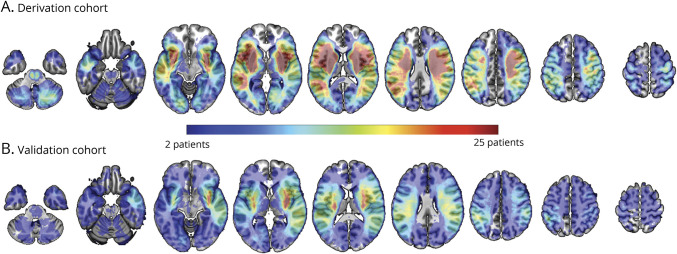Figure 1. Lesions Overlap of All Patients in the Stroke Severity Derivation Cohort (A, n = 664) and Validation Cohort (B, n = 264).
In both the derivation and the validation cohort, the stroke lesion burden was evenly distributed between the left and right hemisphere with the maximal lesion overlap located bilaterally in subcortical brain regions. When comparing groups of patients with high and low WMH burden, there were no widespread systematic differences in the frequencies of how often each cortical and subcortical gray matter region or white matter tract was affected or in the numbers of lesioned voxels within each region of interest. In case of the NIHSS derivation cohort, patients with low WMH burden had a significantly higher frequency for how often the left insular cortex was affected (Fisher exact test: p = 0.002, Bonferroni corrected for multiple comparisons, all further parcels: p > 0.05). In addition, patients in this low WMH burden group had a higher lesion load in the left putamen (2-sided t test p = 0.01, Bonferroni corrected for multiple comparisons, all further parcels: p > 0.05). We do not expect these subtle differences to have a substantial effect on our results, especially as they were not observable in our validation cohort. While beyond the scope of this current study, this less frequent affection of left-hemispheric MCA-territory tissue in patients with high WMH burden may be worth further investigation. In fact, our findings of more severe strokes in case of a high WMH burden and left-hemispheric strokes near the insular cortex prompt the hypothesis that exactly those patients (high WMH burden and left MCA stroke) may be underrecruited in clinical studies in view of their proportionally even higher stroke severity and probable language impairments. MCA = middle cerebral artery; NIHSS = NIH Stroke Scale; WMH = white matter hyperintensity.

